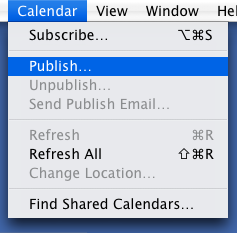In our labs Mac OS X machines bind to a Mac OS X Server for user authentication. But this also affords us the opportunity to control certain aspects of our workstations' behavior en masse as well. And we certainly take advantage of this. The way this works is simple, and, when it works properly, a thing of beauty: Open up Workgroup Manager, create a computer list, add computers to it and then set whatever preferences you want on those systems. Just about anything you can set in System Preferences can be controlled from the server — Login Items, Energy Saver settings, and my personal favorite, Printers, to name just a few. The Open Directory host — your OS X Server — will make sure all the prefs you set in here are managed on the specified machines.
But recently I had a few machines that would simply not allow themselves to be controlled from the server. Binding was working properly, as evidenced by the fact that network logins worked. But any sort of managed preferences would not be sensed by the workstations. This is a perennial problem and historically has had something to do with mcx_cache settings not being reset by the server. But this has gotten much better over the years, to the point where it's not usually an issue. Still I tried everything with regards to cache, and no matter what I did, authentication worked but managed preferences did not. Finally, today I managed to stumble upon the solution.
Turns out there's a little quirk in the Workgroup Manager. Seems if you add the same computer to two different lists, you'll get two separate entries in your OD database — one called "computer" and one called "computer_1." I did this. And then later I deleted the original "computer" entry from the first list, and renamed the "computer_1" entry back to "computer" in the WGM GUI. This is a no-no. And it's what was causing my computer control problems, though there seemed no apparent problem from the standpoint of the standard WGM interface.
The solution was to enable WGM's "Show 'All Records' tab and inspector" preference, which gives you a much more accurate view of your Open Directory database than does the standard GUI interface. Once the "All Records" tab was enabled I opened it up and looked at the "Computers" list from the pull-down on the right (just below the search field). Lo and behold, there was my "computer_1" record, but no "computer" record. Looks like the server was getting confused as to whether to control "computer" (as set in the GUI) or "computer_1" (as was actually entered in the OD database). So I deleted all references to the machine in the "All Records" inspector, then went back into the GUI and re-added the machine to the appropriate list. Voila! The machine instantly began getting managed preference settings from the server.
So the rules of thumb here are:
- Avoid adding the same machine to more than one list. You're not supposed to do it, and it can muck things up.
- The "All Records" tab is your friend. Look here for more accurate views than the standard GUI can provide. Edit with care as necessary.
My lesson for the day.










